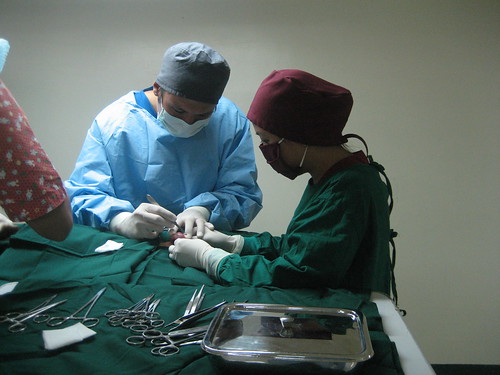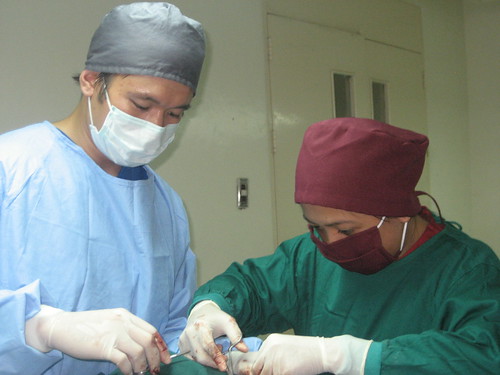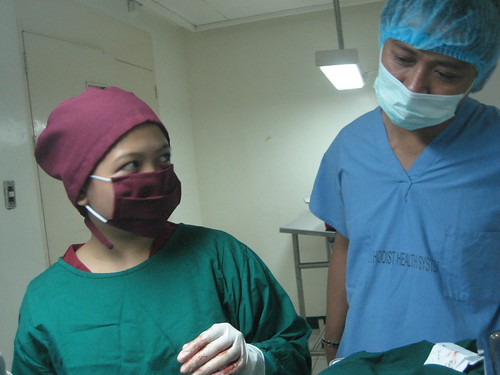So lately, I’ve had a lot of things to do and on that list of things to do was to head up the surgery team this week in a routine canine castration. Well routine to most vets nowadays who perform this procedure (also called “orchiectomy” or “orchidectomy” ).
I set up the protocol for this procedure myself the Monday before our surgery, which was to be held on the following Thursday. We established our roles as nurse, assistant surgeon and anesthetist and then went on to do what we had to do. My nurse, Faye gathered all the materials; my anesthetist James set up the calculations and all the other parenteral medication that was to be given; my assistant surgeon Rosebelle acquainted herself with some adequate closure sutures for the dog we were going to work on.
I was a little nervous before the surgery… mostly because it was a routine procedure that I’ve seen literally hundreds of times before but have never actually performed myself. Would I be able to do it well? Would I be able to finish quickly enough? Would I be able to subject the dog to the least pain possible? All these questions and then some popped up in my head and I thought about everything I could do.
During the actual procedure I followed my protocol and incised on the ventral abdomen a little caudal to the prepuce with a mid-ventral approach. I was able to exteriorize the testicle with the help of Belle and then found and cut the parietal tunic. I ran into a little problem after that when trying to sever the vaginal tunic since I knicked a vessel during the digital separation of the tunic. I had to do a couple of ligations before I could stop the bleeding completely. After that I separated the spermatic cord and the vascular cord, ligated them individually and then did a Millers knot to encircle both. I put a few extra throws to make sure they were secure and then I repeated the process with the other testicle. The second one went without any complications. After that Belle closed up the subcutaneous tissues and skin with some simple interrupted sutures with some non-absorbable material.
I have to say that as routine as this is in veterinary surgery, it is really different when you’re actually doing it than when you read it in the book. I guess that’s pretty obvious, but in my case, I really didn’t know what I was looking at until I actually did it. I learned that there are multiple ways I could’ve approached this surgery, and I learned exactly now what I had to do and what to look at. The book makes it seem really simple, and I guess it is after you practice it a few times, but in reality things are really different!
I’m really glad that I had the opportunity to do this procedure because it was fun (although a bit daunting at first). I’ve castrated cats before and they’re much easier to do than in dogs.
So now I know how to castrate a dog properly! The dog is actually with me now and is up and pretty much fine. I’m glad that no complications have occurred so far (::knocks on wood::).
So thanks to Rosebelle, Faye, James and Doc Alex for helping me through it! You guys were awesome. I hope to do one of these procedures again soon!












Recent Comments